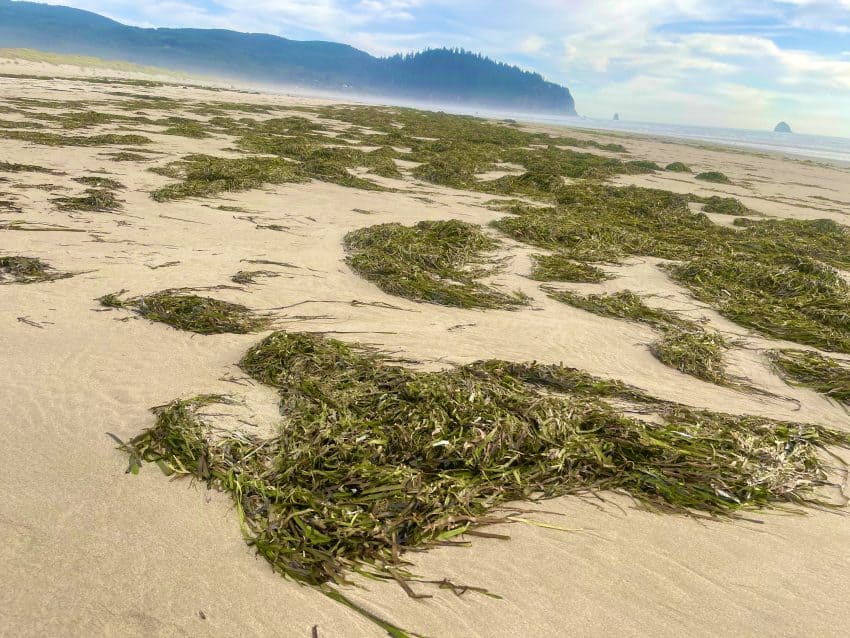While enjoying the rich taste of the ocean when we savor a fresh local oyster, it is interesting to delve into the symbiotic relationship between what you are eating and the estuary from whence it came. A myriad of studies have uncovered complex interdependencies between oysters and surrounding eelgrass beds growing within the estuary.
As filter feeders, oysters remove sediment from the water and increase its clarity, which could make it easier for eelgrass to photosynthesize. The physical structure of the man made racks or of the natural reefs they grow on break incoming waves stabilizing the bay bottom which decreases the physical stress on the plants. Some studies suggest that oysters could even inhibit Eelgrass Wasting Disease by eating the Labyrinthula zosterae, the pathogenic protist that causes the disease.
On the other hand, eelgrass beds take up carbon dioxide which in turn decreases the acidity of the surrounding water.
Thirty percent of atmospheric carbon dioxide emissions are absorbed by oceans. That carbon makes ocean waters more acidic, weakening the shells of oysters. Particularly affected are the young oyster “spat” whose weakened shell material leaves them vulnerable to disease and predation.
With such a delicate and beneficial relationship between oysters and eelgrass wouldn’t you think eelgrass would be a protected species? After all, in addition to benefiting the growth of oysters, eelgrass beds transform barren mudflats into a rich web of animal activity. Microscopic zooplankton feed on the plants, while juvenile salmon feed on the zooplankton. Pacific herring lay eggs on the leaves, and young Dungeness crab seek refuge between the stems. Underground, rootlike rhizomes oxygenate the soil, attracting clams and snails.
Unfortunately, our own State Department of Agriculture, the agency managing the leases issued to oyster farming operations in Tillamook Bay, are turning a blind eye to the harrowing and dredging of the eelgrass beds. You can see evidence of this destruction washing up on local beaches: miles of piles of green eelgrass with roots attached. Most oyster farmers cultivate and harvest by hand and are not in competition with the grass, but one operation is being allowed to use mechanized methods of ground preparation and harvest. How long can this continuous raking and dredging of the eelgrass go on before it disappears? Ecologists are worried about the loss of eelgrass, and not just out of concern for the plant itself. The disappearance of eelgrass can collapse entire ecosystems.
So what can you do to help protect the abundance you enjoy from our bay? Before you bite into that juicy oyster, ask where it was sourced. Was it raised by hand or by mechanized aquaculture? Write your local state legislators and your State Department of Agriculture with your support for a ban on mechanized oyster farming. Together we can make a difference in ensuring our government agencies are accountable in managing our natural resources in a sustainable way.
With events on the horizon like the Bay City Pearl and Oyster Festival (August 24 and 25: https://www.baycitypearlandoysterfestival.com ) and National Estuaries Week (September 21 through 28: https://www.nerra.org/estuaries-week/), it is a good time to appreciate what a treasure we have in Tillamook Bay and its associated estuaries.
Friends Of Tillamook Bay is a grassroots group of concerned citizens who have witnessed first hand the devastating effects of mechanized aquaculture in Tillamook bay and is taking the on the task of raising public awareness in the hopes of affecting policy change. friendsoftillamookbay@gmail.com


